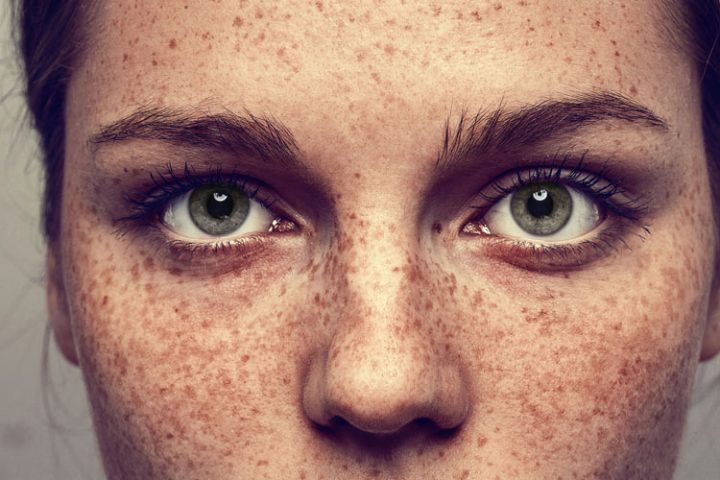
Pigmentation refers to changes in the melanin (pigment) of your skin. There are many types of skin pigmentation.
- A lentigo (plural lentigines) is a non-cancerous, pigmented spot with a clearly defined edge. Lentigines may evolve slowly over years, or appear suddenly. They may occur anywhere on the body and vary in colour from light brown to black. These spots are caused by UV sun-exposure and the degree depends on how much UV light these melanin pigments are exposed to. These must be monitored as they may develop into skin cancer and melanoma. Annual checks with your dermatologist or skin specialist is recommended. To prevent this condition, we recommend Uberzinc natural UV protector. If however, you already suffer these sun-spots, Synergie essential serums (Vitamin A, B and C) plus a skin lightening serum such as Enlighten may help lighten these spots. Unfortunately, once you have them though, you cannot fully remove them. Medical treatments such as IPL, Laser and AHA peels may also reduce the appearance of sunspots.
- The most common type of pigmentation is ephelides or freckles. These are flat circular light spots on the skin about the size of the head of a nail that develops after repeated exposure to sunlight, particularly in someone of fair complexion. They appear darker during the sunny months and fade in the winter. Heredity also influences freckling, as witnessed by the striking similarity in the total number of freckles on identical twins. Freckles benign but they may sometimes be confused with more serious skin problems.
- Melasma or Chloasma is pigmentation that is deeper in the skin dermis. It appears on the face as larger brown patches with a non-distinct border. This type of pigmentation mostly affects Asian and fair skinned people and is more common in women. Though causes are unknown, it is often linked to hormonal imbalances. The condition is made worse with UV exposure, overheating the blood, some medications, pregnancy and stress.
If you suffer any form of pigmentation it is advised that you consult a dermatologist who can correctly diagnose and recommended treatments for pigmentation. In terms of home care the following ingredients will help reduce pigmentation:
- Vitamin A serum in the form of stabilised retinol (Synergie Skin Ultimate A)
- Vitamin B3/Niacinamide serum (Synergie Skin Vitamin B)
- Vitamin C in the form of L-ascorbic acid (Synergie Skin Suprema-C or Pure-C crystals)
- Synergie Skin EnLighten serum also contains active ingredients will help reduce uneven skin tone and skin discolouration without harmful ingredients which may inflame the skin. Use this product twice daily with essential A/B/C serums and prior to moisturising.
Protection really is the vital key to preventing sunspots and protecting your skin from harsh UVA and UVB rays. To prevent future pigmentation, use ÜberZinc for facial protection and ÜberZinc Body for other areas of the body, particularly hands, arms and neck. These products contain 21% zinc oxide – nature’s natural sun protector. ÜberZinc Body is also combined with Vitamin D3 to help replenish Vitamin D that may be lost from avoiding sun exposure.
THE ROUTINE
DAY
- UltraCleanse – gel facial cleanser
- Home Roller – microneedling device to improve ingredient penetration
- EnLighten – skin brightening serum
- Pure-C crystals – L-Ascorbic acid
- ÜberZinc – moisturiser with 21% zinc oxide
NIGHT
- UltraCleanse – gel facial cleanser
- EnLighten – skin brightening serum
- Ultimate A – stabilised retinol serum
- Vitamin B – essential niacinamide serum
- ÜberZinc – moisturiser with 21% zinc oxide
WEEKLY
- MediScrub – facial scrub
OCCASIONAL
- ReVeal + Pure-C crystals every third AM in place of EnLighten
For an introductory set, we recommend the Synergie Skin Brightening Kit a targeted mini kit to address the appearance of uneven skin tone and pigmentation.
